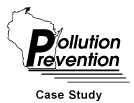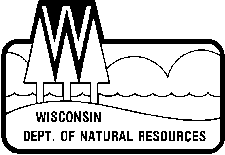
Thilmany - Division of
International Paper
Substituting Less Toxic Solvents for Hazardous Solvents
Perchloroethylene/n-butanol
Trichloroethylene
- Thilmany substituted a non-toxic, non-hazardous solvent for mineral spirits in all of the maintenance parts washers. The parts washers also were refitted with a dual filter system so that the recirculated solvent could be continuously cleaned. The used filters have been tested and found to be non-hazardous.
- A less toxic, non-chlorinated solvent is being used instead of perchloroethylene/n-butanol in their flexographic platemaking process. This solvent is then shipped for recycling.
- The company also developed new techniques to gather basis weight information so that only a small percentage of the samples taken must be tested with trichloroethylene.
Feedstock
- mineral spirits
- perchloroethylene/n-butanol
- trichloroethylene
Waste
- mineral spirits contaminated with grease
- perchloroethylene contaminated with bits of rubber
- trichloroethylene contaminated with polyethylene coating residue
Disposal
- shipped off-site for hazardous waste disposal
- shipped off-site for hazardous waste recycling
- shipped off-site for hazardous waste disposal
Pollution Prevention Approach
Feedstock
- ZEP 143 light aliphatic naphtha solvent; not listed as RCRA hazardous waste
- SOLVIT plate wash; petroleum hydrocarbon with aliphatic alcohol; less toxic, non-chlorinated
- process modification
Waste
- used filters; no liquid
- contaminated, less toxic solvent
- spent trichloroethylene
Disposal
- closed-loop reuse; filters disposed as solid waste
- shipped off-site for recycling
- reduced amount for disposal
- $375 for initial washer/filter
- none
- none
Operating/Maintenance Cost
- $280 replacement filters/year. Raw material cost went up while disposal costs decreased, resulting in $600 annual savings.
- Retrofitting of processing unit, one-time costs minimal. Waste continues to be sent out for reclamation, but is now solid waste, not hazardous.
- At 1990 costs, Thilmany now saves $30,000/yr in raw material and disposal costs. At 1992 costs, Thilmany would save $59,000/yr.
Payback Period
- less than 2 months
- not available
- immediate
- The conversion from perchloroethylene/n-butanol to a non-chlorinated solvent in their flexographic platemaking process forced Thilmany to modify the ventilation system previously used in that process.
- Employees needed retraining in order to become familiar with the new products.
- Replacements for the hazardous substances were difficult to find. Thilmany was concerned that the product quality remain the same; therefore, staff had to evaluate several product substitutes before adequate substitutes were found.
Thilmany Road, Box 600
Kaukauna, Wisconsin 54130
Phone: 414/766-8656
FAX: 414/766-8708
University of Wisconsin Extension
Solid and Hazardous Waste Education Center
Milwaukee area: 414/475-2845
Remainder of state: 608/262-0385
Pollution Prevention
Information Clearinghouse
Wisconsin Department of Natural Resources
Hazardous Waste Minimization Program
608/264-8852, 608/267-9523 or 608/267-3763
 |
PUBL-TS-017 94 |